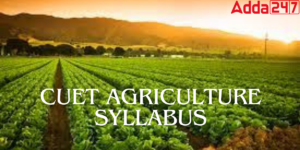The Central Board of Secondary Education released the most latest Class 9 Science Syllabus for the current academic year, 2024–25. To perform well in examinations and yearly exams, students must completely review the CBSE Class 9 Science Syllabus 2025 and devote adequate attention to each topic discussed in it. Scroll down the page for a brief overview of the chapters included in the CBSE Class 9 Science Syllabus 2024-25.
CBSE Class 9 Science Syllabus 2024-25
The topics covered in the CBSE class 9 syllabus 2024–25 establish the foundation for the ideas that students will learn in more advanced courses. Physics, Chemistry, and Biology are the three fields of science taught to students in Class 9.
For students in this level of education, the CBSE Class 9 Science Syllabus is comprehensive and includes a wide range of subjects in all three branches of science. As a result, they must understand the core concepts stated in the CBSE Class 9 syllabus. Check out the whole theoretical syllabus as well as the list of experiments required for the CBSE Class 9 Science practical assessment.
Science Class 10 Syllabus 2025
The CBSE Class 9 Science Syllabus 2025 allows students to efficiently plan their study time. The curriculum consists of four units, the names of which, together with the weightage allotted for the annual examination, are as follows:
| Unit No. | Unit Name | Marks |
| I. | Matter – Its Nature and Behaviour | 25 |
| II. | Organization in the living world | 22 |
| III. | Motion, force and work | 27 |
| IV. | Food, Food Production | 6 |
| Total Marks | 80 | |
CBSE Class 9 Science Syllabus 2025 Unit Wise
CBSE administers an 80-mark annual theory exam for Class 9 All subjects with an additional 20 marks for internal assessments. Students must be aware that the Annual Examination will be based on the full Class 9 Science Syllabus 2024-25. As a result, students must efficiently complete all four units included in the Class 12 Science syllabus.
Theme: Materials
Unit I: Matter-Nature and Behaviour
Definition of matter; solid, liquid and gas; characteristics – shape, volume, density; change of statemelting (absorption of heat), freezing, evaporation (cooling by evaporation), condensation, sublimation.
Nature of matter: Elements, compounds and mixtures. Heterogeneous and homogenous mixtures, colloids and suspensions. Physical and chemical changes (excluding separating the components of a mixture).
Particle nature and their basic units: Atoms and molecules, Law of Chemical Combination, Chemical formula of common compounds, Atomic and molecular masses.
Structure of atoms: Electrons, protons and neutrons, Valency, Atomic Number and Mass Number, Isotopes and Isobars.
Theme: The World of the Living
Unit II: Organization in the Living World
Cell – Basic Unit of life : Cell as a basic unit of life; prokaryotic and eukaryotic cells, multicellular organisms; cell membrane and cell wall, cell organelles and cell inclusions; chloroplast, mitochondria, vacuoles, endoplasmic reticulum, Golgi apparatus; nucleus, chromosomes – basic structure, number.
Tissues, Organs, Organ System, Organism: Structure and functions of animal and plant tissues (only four types of tissues in animals; Meristematic and Permanent tissues in plants).
Theme: Moving Things, People and Ideas
Unit III: Motion, Force and Work
Motion: Distance and displacement, velocity; uniform and non-uniform motion along a straight line; acceleration, distance-time, and velocity-time graphs for uniform motion and uniformly accelerated motion, elementary idea of uniform circular motion.
Force and Newton’s laws: Force and Motion, Newton’s Laws of Motion, Action and Reaction forces, Inertia of a body, Inertia and mass, Momentum, Force and Acceleration.
Gravitation: Gravitation; Universal Law of Gravitation, Force of Gravitation of the earth (gravity), Acceleration due to Gravity; Mass and Weight; Free fall.
Floatation: Thrust and Pressure. Archimedes’ Principle; Buoyancy.
Work, Energy and Power: Work done by a Force, Energy, power; Kinetic and Potential energy; Law of conservation of energy (excluding commercial unit of Energy).
Sound: Nature of sound and its propagation in various media, speed of sound, range of hearing in humans; ultrasound; reflection of sound; echo.
Theme: Food
Unit IV: Food Production
Plant and animal breeding and selection for quality improvement and management; Use of fertilizers and manures; Protection from pests and diseases; Organic farming.
Class 9 Science Syllabus for Practicals
Practicals should be conducted alongside the concepts taught in theory classes.
(LIST OF EXPERIMENTS)
1. Preparation of: (Unit-I)
a) a true solution of common salt, sugar and alum
b) a suspension of soil, chalk powder and fine sand in water
c) a colloidal solution of starch in water and egg albumin/milk in water and distinguish
between these on the basis of
- transparency
- filtration criterion
- stability
2. Preparation of (Unit-I)
a) A mixture
b) A compound
using iron filings and sulfur powder and distinguishing between these on the basis of:
(i) appearance, i.e., homogeneity and heterogeneity
(ii) behavior towards a magnet
(iii) behavior towards carbon disulfide as a solvent
(iv) effect of heat
3. Perform the following reactions and classify them as physical or chemical changes: (Unit-I)
a) Iron with copper sulphate solution in water
b) Burning of magnesium ribbon in air
c) Zinc with dilute sulphuric acid
d) Heating of copper sulphate crystals
e) Sodium sulphate with barium chloride in the form of their solutions in water
4. Preparation of stained temporary mounts of (a) onion peel, (b) human cheek cells & to record observations and draw their labeled diagrams. (Unit-II)
5. Identification of Parenchyma, Collenchyma and Sclerenchyma tissues in plants, striped, smooth and cardiac muscle fibers and nerve cells in animals, from prepared slides. Draw their labeled diagrams. (Unit-II)
6. Determination of the melting point of ice and the boiling point of water. (Unit-I)
7. Verification of the Laws of reflection of sound. (Unit-III)
8. Determination of the density of solid (denser than water) by using a spring balance and a measuring cylinder. (Unit-III)
9. Establishing the relation between the loss in weight of a solid when fully immersed in (Unit-III)
a) Tap water
b) Strongly salty water with the weight of water displaced by it by taking at least two
different solids.
10. Determination of the speed of a pulse propagated through a stretched string/slinky (helical spring). (Unit-III)
11. Verification of the law of conservation of mass in a chemical reaction. (Unit-II)
Class 9 Science Syllabus 2024-25 PDF Download
Students starting class 9 in the academic year 2024-25 must have access to the new CBSE Class 9 curriculum PDF to familiarize themselves with the topics and courses they will be learning throughout the year. To make things easier, we’ve shared the CBSE Class 9 Science Syllabus 2024-25 PDF below.










 CUET General Test Syllabus 2026 (Latest)...
CUET General Test Syllabus 2026 (Latest)...
 CUET Chemistry Syllabus 2026, Download O...
CUET Chemistry Syllabus 2026, Download O...
 CUET Agriculture Syllabus 2026, Pattern,...
CUET Agriculture Syllabus 2026, Pattern,...














